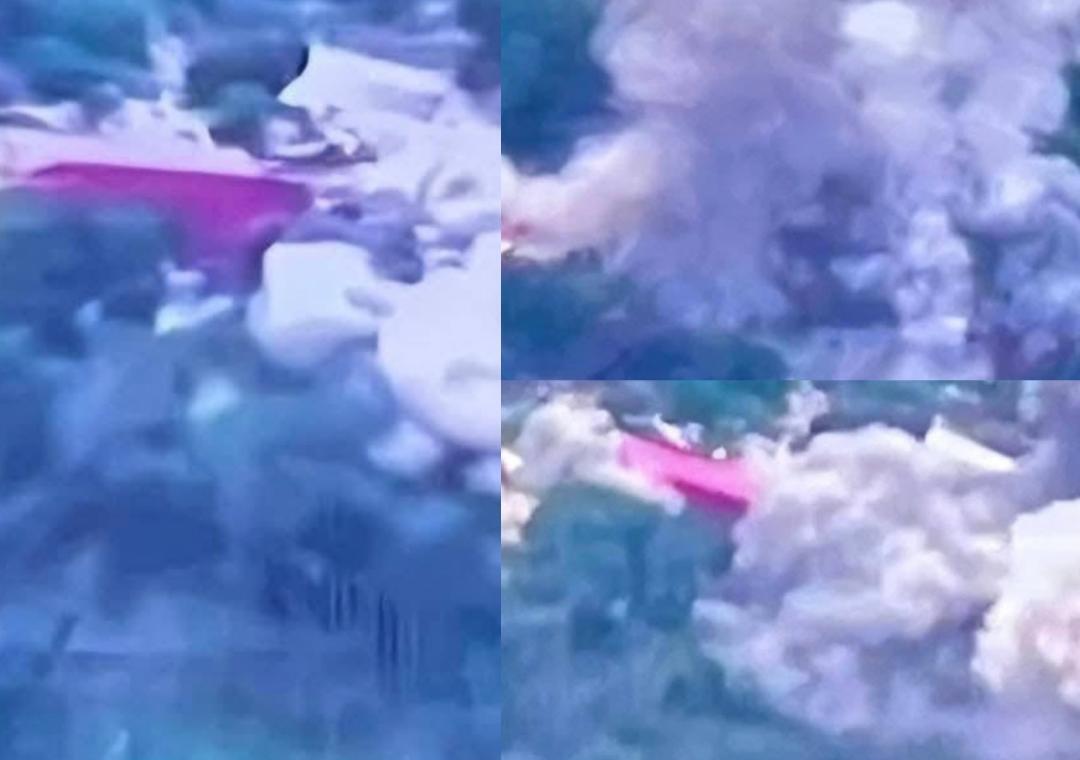
Thailand Releases Pics of F-16 Jets Striking Cambodian Targets
In a dramatic escalation of the ongoing border dispute between Thailand and Cambodia, Thailand on Thursday released high-resolution images of F-16 jets striking Cambodian military posts accused of engaging in deadly cross-border shelling. The airstrikes targeted the headquarters of Cambodia’s 8th and 9th Infantry Support Divisions, which are believed to be responsible for bombarding Thai civilian zones.
The development comes as tensions between the two Southeast Asian nations continue to simmer, with over 12 people killed in the conflict so far. The situation has been marked by a series of violent incidents, including artillery exchanges and armed clashes along the border.
The airstrikes were carried out in response to a series of attacks by Cambodian forces on Thai civilians and military targets, according to Thai authorities. The Thai military claimed that the F-16 jets struck the Cambodian military posts with precision, using advanced targeting systems to minimize collateral damage.
The release of the images by the Thai military is seen as a bold move to demonstrate the effectiveness of its military response to the Cambodian aggression. The images show the F-16 jets in flight, as well as the impact of the airstrikes on the Cambodian military targets.
The conflict between Thailand and Cambodia is rooted in a long-standing border dispute, with the two nations having competing claims to a stretch of land along their shared border. The dispute has been ongoing for decades, but it has escalated in recent months, with both sides trading accusations of aggression.
The latest round of violence began on February 4, when Cambodian forces launched a series of artillery attacks on Thai military targets. Thailand responded with its own artillery strikes, and the violence has continued to escalate since then.
The international community has called for restraint and an end to the violence, with the Association of Southeast Asian Nations (ASEAN) issuing a statement urging both sides to work towards a peaceful resolution to the conflict.
The Thai military has been at the forefront of the country’s response to the Cambodian aggression, with F-16 jets and other military assets being deployed to the border region. The Thai military has also been conducting ground operations against Cambodian forces, with reports of intense fighting along the border.
The Cambodian government has accused Thailand of launching a “full-scale invasion” of its territory, and has called for international intervention to end the violence. However, the Thai government has denied these claims, and has instead accused Cambodia of engaging in aggressive behavior along the border.
The release of the images by the Thai military is seen as a significant development in the conflict, and is likely to increase pressure on the Cambodian government to end its aggressive behavior along the border. The images provide clear evidence of the Thai military’s ability to strike Cambodian targets with precision, and are likely to be used to bolster the country’s claims that it is acting in self-defense.
In a statement, the Thai military said that the airstrikes were carried out in response to “multiple attacks” by Cambodian forces on Thai civilians and military targets. The statement added that the F-16 jets were used to strike “high-priority targets” in order to minimize civilian casualties.
The conflict between Thailand and Cambodia is a complex and deeply entrenched issue, with both sides having competing claims to the disputed territory. However, the release of the images by the Thai military is a clear indication that the country is willing to take decisive action to defend its sovereignty and protect its citizens.
As the situation continues to unfold, it remains to be seen whether the international community will be able to pressure both sides to work towards a peaceful resolution to the conflict. In the meantime, the people of Thailand and Cambodia are caught in the middle of a deadly and destructive conflict that shows no signs of abating.





